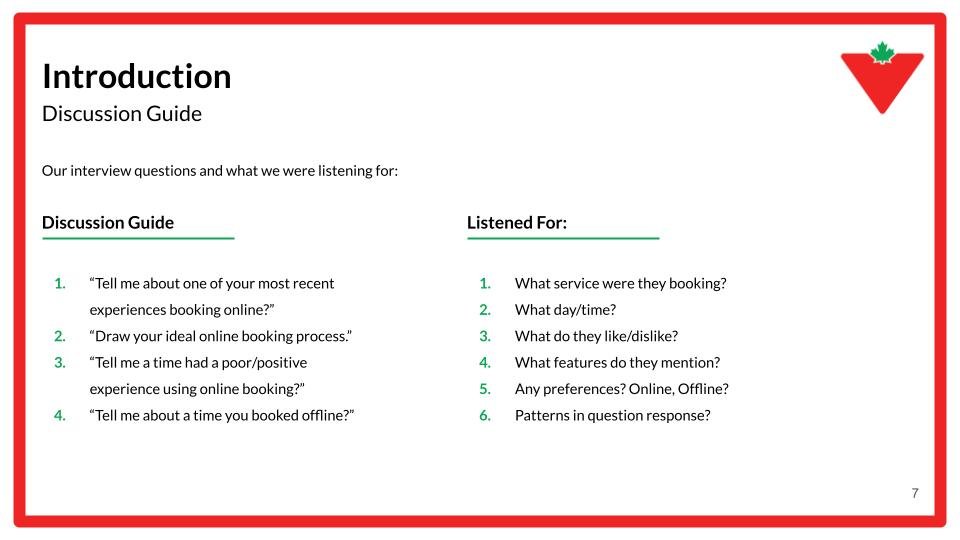Overview
Auto service is a unique value proposition that Canadian Tire can leverage to differentiate itself from other retail chains in Canada.
Our team chose to focus on the auto service appointment booking process to conduct user research and identify key pain points and opportunities. The goal was to uncover insights and provide actionable recommendations to improve the user experience — from the moment users visit the website to the completion of their appointment.
The Opportunity
Canadian Tire has clearly invested in its user experience — especially within the auto service booking flow. However, through our research, we identified several opportunities to streamline and enhance the process.
We developed a series of recommendations aimed at reducing friction, improving clarity, and creating a more seamless experience for users. These improvements not only enhance usability but also have the potential to drive higher booking conversions and strengthen customer loyalty.
The Audience
Our team conducted 8 interviews, with participants ranging from 18 to 30 years of age who own street-legal automobiles. All participants were selected through a screener, and interviews were conducted using a moderator script.
Roles
We worked in a team of 4, where all of us were working in a progressive system with set deadlines each week to complete different milestones.
We share responsibilities equally among team members, with me working independently on competitive analysis, recruiting and conducting 2 user interviews. As a team, we came up with screener, moderator script, personas, journey map and delivered the final report.
The Process
The full report can be viewed here.
Each of us would conduct competitive analysis individually, identify key areas that we want to focus our research on.
As a team, we discussed and agreed that we wanted to focus on the auto service, specifically the auto appointment booking process, as we think that this is a unique service that can provide value to Canadian Tire compared to other competitors in the retail market.
The next step was to come up with a screener and moderator script in order to recruit participants and conduct interviews. We conducted 2 interviews individually, which totalled to 8 interviews as a team.
Data collected was analyzed and synthesized using affinity diagramming, resulting in a persona and journey map.
At the final stages of the project, we took an extensive look into the final journey map to identify pain points and opportunities, from which recommendations were suggested to the overall process.
Outcome and Lesson Learned
I have learnt that no matter how well the process was designed, there is always room for improvement. The more well designed the process was, the more critical I had to look in order to identify unmet needs. Personally, I enjoyed the challenge of looking into big corporations such as Canadian Tire, the area where it would have potentially been considered to have little room to improve.
I also realized the importance of making the end users to be co-creators of the process of improvement and to keep an open mind when it comes to user research, as it is easy for researchers to come in with an expert mindset and ignore the potential useful insight from participants.






